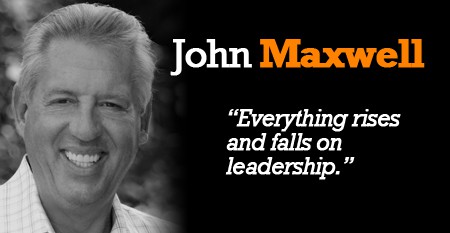“Can you provide any tips for modeling a winning compensation plan?” is today’s Myatt on Monday’s question which was asked by a CFO of an Internet marketing company. While certainly a great question, I must admit that I have been reluctant to address the topic of compensation in previous posts as compensation theory is not only complex, but it often varies greatly based upon the situational realities of different workplace environments. That being said, there are definitely key elements that serve as the foundation for any well-designed compensation plan which I’ll cover in today’s post…
As critical an issue as compensation is to a company’s health and well-being it is not something that should be assessed solely on its own merits. Compensation is interwoven into the core of a company’s culture and has many touchpoints across the enterprise.
Moreover, the best compensation plan in the world will not make up for a lack of leadership, a poor product or service offering, a lack of integrity, or any number of other more important corporate characteristics and values. As an example, if you have a best in class compensation plan, but a low-quality product offering you won’t attract quality clients or quality talent. Rather you’ll just attract mercenary employees looking to exploit a compensation plan and who will disappoint clients that will, in turn, seek solace from your competitors.
Taking note of the above-referenced caveats, it has still been my experience that if you desire to effect change or influence culture within a corporate setting the most effective catalyst is a well-engineered compensation plan. A fully integrated comp plan built upon sound underlying business logic is one of the very few strategic management tools available to an organization that can lift company morale, as well as have a simultaneous, dramatic positive impact on both the top and bottom line.
In order to thrive in today’s ultra-competitive marketplace, it is essential that companies invest in processes that reward profitable behavior, align groups (i.e. teams, business units, or operating entities) and meet the strategic goals of the enterprise. Realizing the direct correlation that a properly designed compensation strategy has to operational and financial performance, it is mission-critical to implement an integrated compensation model that is fair, rewarding, and profitable for both the company and its employees. In order to be effective for all concerned parties, an integrated compensation plan must provide the following benefits:
- Create a better alignment between strategy, efforts, and results;
- Create the proper relationship between fixed and variable compensation overhead;
- Grow revenue by quickly adapting to changing business conditions and competitive threats;
- Increase profitability by cutting administrative costs and tying compensation to variables that keep compensation overhead within industry norms while advancing business initiatives;
- Serve to focus on corporate culture and behavior on revenue growth and profitability;
- Serve as a leverage point for recruiting and retention efforts;
- Create goal congruence between the employees and the company;
- Serve as a foundational catalyst for change management across the enterprise;
- Preserve continuity of equity/ownership;
- Provide long-term wealth creation for key employees without disrupting continuity or creating a funding hardship for the enterprise;
- Maximize tax advantages for the company and its employees, and;
- Enhance the overall quality of the company benefits plan by providing a wide array of meaningful benefits to employees at all levels.
Before diving in and re-engineering an existing compensation plan, careful consideration should be given to both the current dynamics and future goals of the enterprise. In assessing the various options for the architecture of an integrated compensation plan the following items must be taken into account:
- The organizational and operating history of the entity;
- The compensation history surrounding the entity and its employees;
- Current compensation of employees bench-marked against national standards, local competitors, current production, and future business goals;
- The duties, responsibilities and current risk exposure of employees, and;
- The employee’s current and future role as team members of the company.
Let’s take a look at some of the building blocks available to management when considering different compensation options. The following items are all viable options to be included in a fully integrated compensation plan:
- A Competitive Salary and Benefits Program;
- Executive Perquisites (company car, use of corporate jet, club memberships, housing allowance, expense accounts, etc.);
- Commission and Override Structures;
- Defined Benefit and Defined Contribution Plans;
- Deferred Compensation Plans;
- Incentive Stock Options (ISO’s);
- Non-qualified Stock Options (NSO’s);
- Employee Stock Purchase Plans (ESPP’s);
- Employee Stock Ownership Plans (ESOP’s);
- Phantom Stock Ownership Plans and other Non-qualified plans;
- Profit-Sharing Plans;
- Bonus Pools, and;
- Project or Initiative Based Incentive and Participation Plans.
As noted above the implementation of a compensation plan in and of itself will not heal an otherwise ailing company. However, a fully integrated and well-designed compensation plan rolled out in a healthy corporate culture based upon quality, integrity, and character will have a dramatic positive result.







